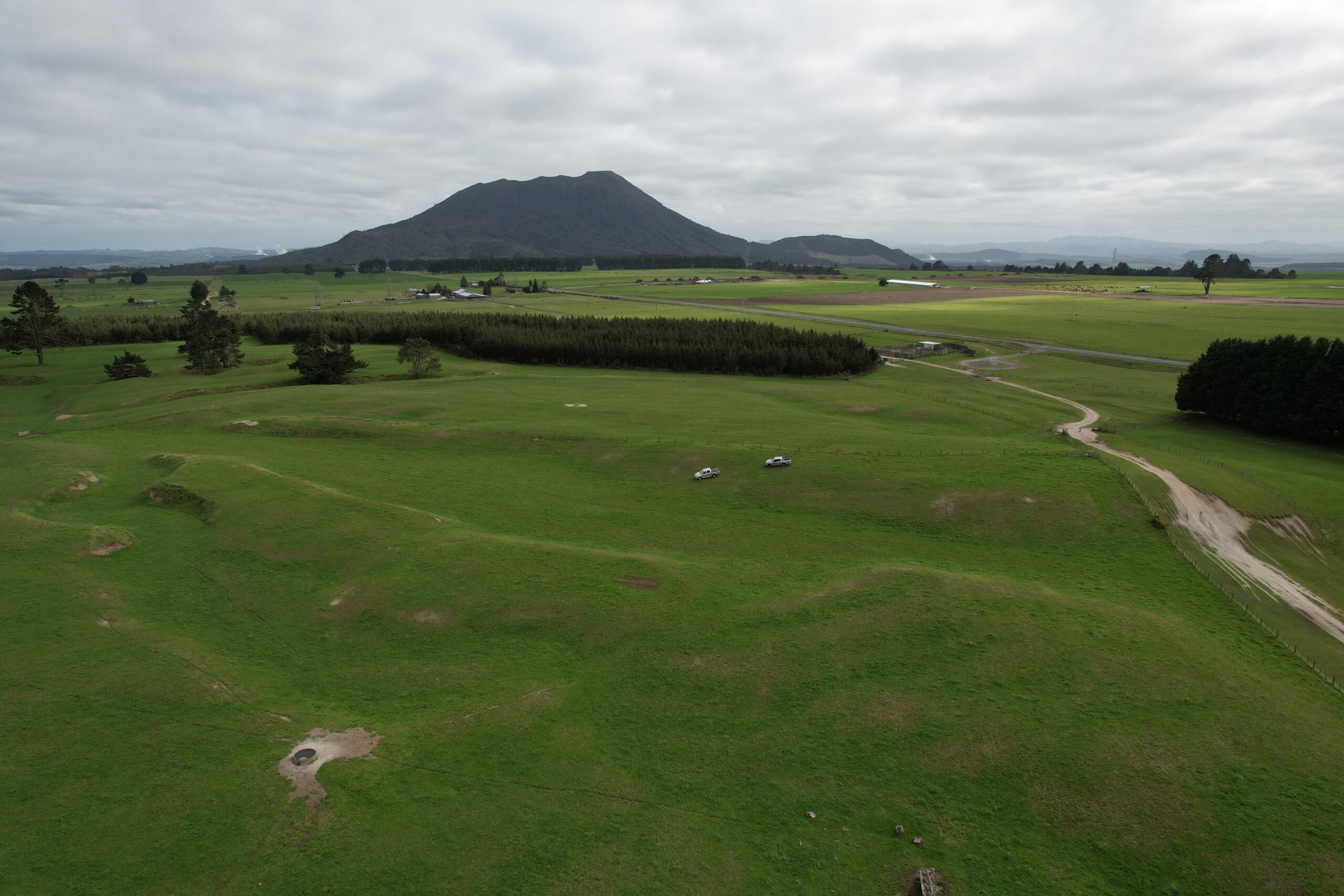“KIA WHANGAIHIA NGA URI – A TINANA, A HINENGARO, A WAIRUA”
— To provide sustenance to beneficial owners and their descendants mind, body and soul.
Ōpepe Farm Trust has scaled up its commitment to restoring the land and its tribal owners’ reconnection to the land it farms, extending its 84ha regenerative-based rere ki uta rere ki tai trial across its entire 3,200ha commercial operation.
Ōpepe Farm Trust is among 10 farms in the Waikato and Bay of Plenty in our rere ki Uta Rere ki Tai pilot project, which focuses on soil science and mātauranga. Their involvement followed a four-year transition to a more resilient farming operation through healthy animals, thriving biodiversity and restoring soil microbiology.
The Trust oversees the collectively managed 455ha Te Mania dairy farm, 345ha Te Maru dairy units and Te Mara, a 2,400ha sheep and beef operation near Taupō.
It operates as an Ahu Whenua Land Trust, a legacy vehicle used by Māori land owners to utilise one or more blocks of tribal land for activities like beef, sheep and dairy farming and horticulture.
Trustees can only act in the best interest of beneficiaries of the land, with the appointed Ōpepe Trust reporting to almost 6000 collective tribal owners. They must govern the whenua for the benefit of all.
The legal structure is a legacy of colonisation, when The Crown sought to move from the Māori practice of joint customary ownership to the European practice of individual ownership of land.
Yet the mission is grounded in tikanga/tribal values – to support and sustain the mana and wellbeing of the lands, marae and people of Ōpepe Farm Trust.
“If we aren’t restoring the land, we aren’t restoring ourselves,” said Ōpepe Farm General Partnership Limited Chair Jan Hania. “It’s about how we move beyond the system that we have to a restorative and resilient system.
“We’re also undertaking deepened cultural and historical mapping and learnings, this being an important thoroughfare for [Ngati] Tuwharetoa in the past, with a rich narrative through which we can enliven the farm team and owner’s reconnection to this whenua.”
The farm sits above Lake Taupō, and as such it already operates under stricter Nitrogen input limits introduced to cut overall catchment leaching into the lake by 20 percent, as part of the Lake Taupō Protection Project initiated around 2001.
With Mt Ruapehu beyond, this location not only brings the challenge of buffeting and cold winds, but long dry summers and pumice soils, making for tough forage and feed growing conditions.
Jan said achieving all that’s planned and minimising fertiliser inputs will take some years but the Trust are committed.
“We brought in advisor, Phil Schofield, to oversee the landregeneration into the future during its involvement in the Rere ki Uta Rere kiTai pilot project. Phil brings specific experience in some similarly located farm operations.
“As we talked, he looked at the whole farm and said if you’re going to go whole hog, here’s the way to go. With Rere ki Uta Rere ki Tai, we’ve trialled seed mixes and adapted our fertiliser regime accordingly to revitalise the living microbiology of the soil. Phil’s experience with farms with similar soils and climate helped give us confidence to go to the next level.”
Dairy cow numbers have been cut from 2,110 to 1,950 and AgriSea seaweed bio-stimulants added to specialised fertiliser mix on the 84ha trial area to kick start biology where an initial 10ha of summer diverse pasture was planted and 20ha crop of permanent diverse pasture.
Nitrogen is still used but the transition away from inputs is guided by the Ōpepe management team, PerrinAg,the Rere ki Uta Rere ki Tai team and Schofield.
Scope 1, 2 and 3 emissions will be tracked and bettermanaged, with a goal of eventually replacing imported feed such as palm kernelwith locally sourced supplements.
Reducing farm waste and diversifying food products to direct source the owners and local community is another focus for Ōpepe.
“There’s stacks to do to optimise the land,” says Jan, “with planting out gullies and less grazeable land areas into native, and seeing what biodiversity or carbon markets might bring to speed up that transition. We are carrying out a baseline soil carbon stock take as we undertake this transition.”
The Trust is reconnecting with mātauranga knowledge – Māori science – as part of its toolbox.
“People will see, feel and experience smells and see birds and see the shiny coat on their animals and they’ll dig into the soil and see microbiology that’s alive. They’ll see multi species crops, forests thriving. These are all elements of mātauranga that we elevate. We will learn more too about seasonal changes associated with local nature indicators, and we will look to learn more of the maramataka (Māori lunar calendar) approach as we progress.”
Read more about Opepe Farm Trust; https://www.heakina.co.nz/opepe-farm-trust
Interested in helpful resources to help on your farm? Visit agrisea.co.nz/kete-resources/
Be first to find out about new resources by joining us on Facebook and Linkedin.

